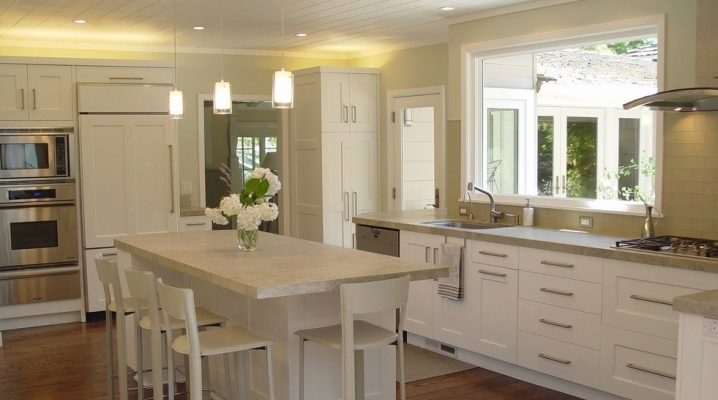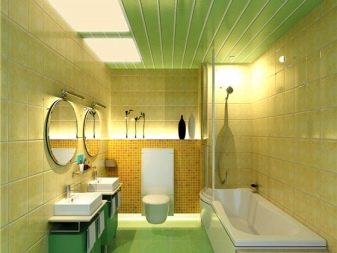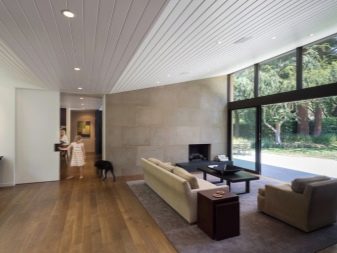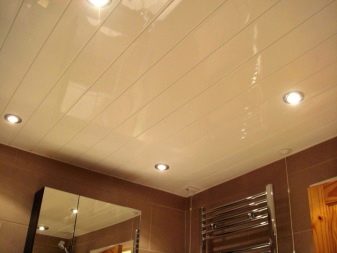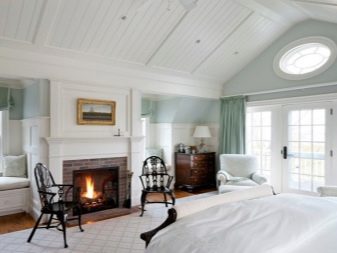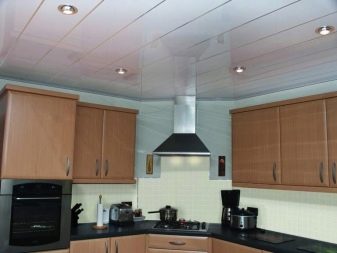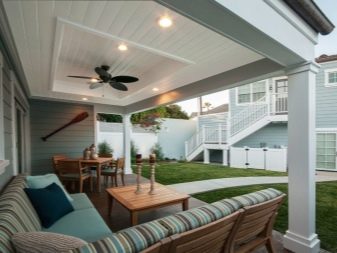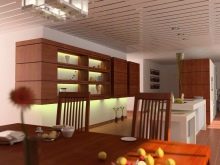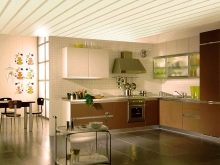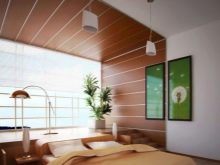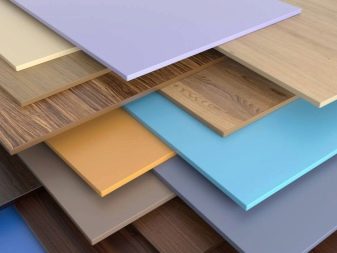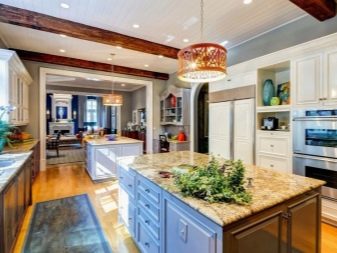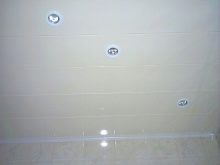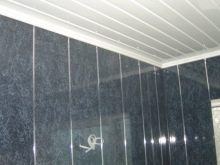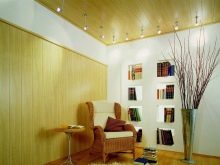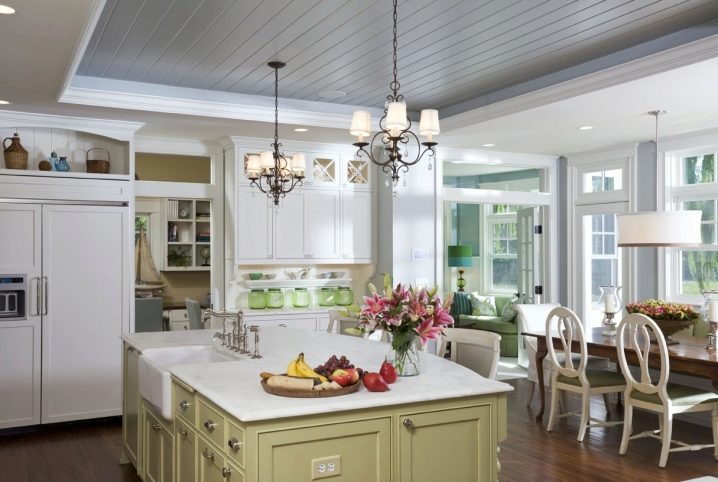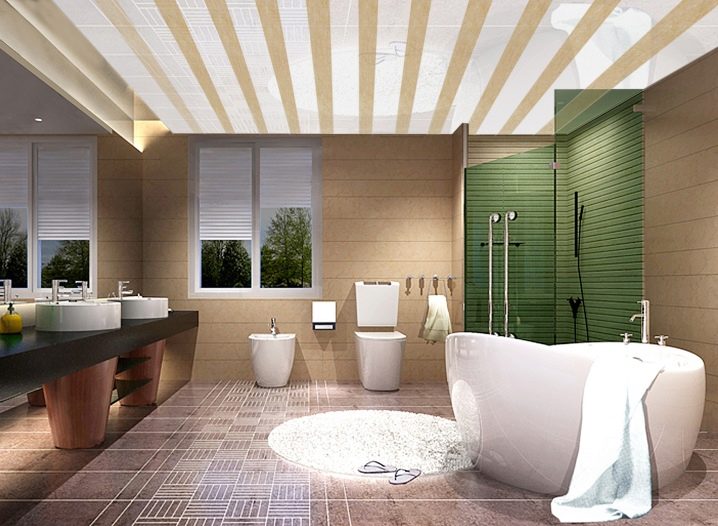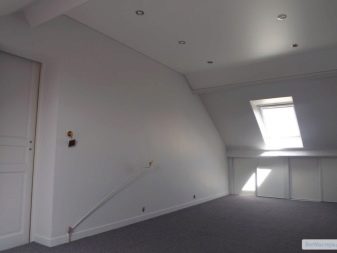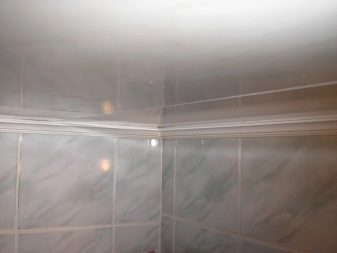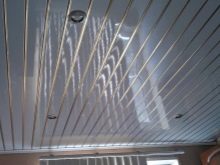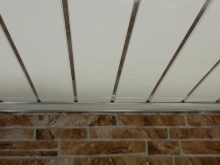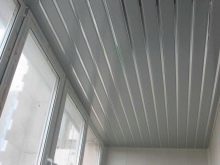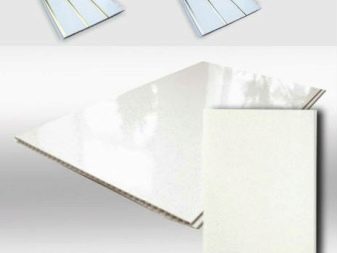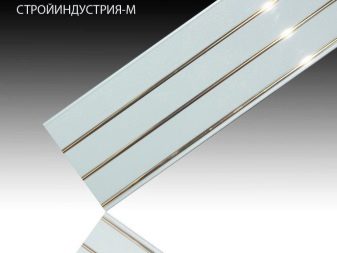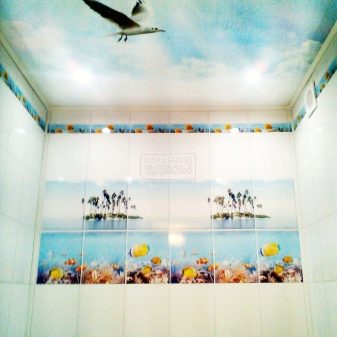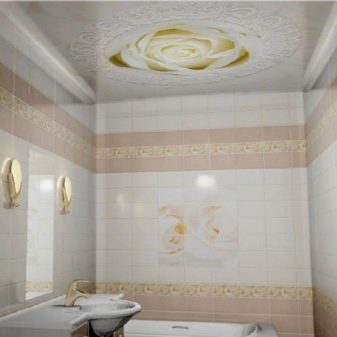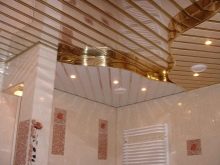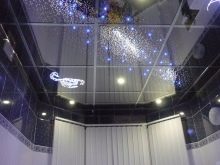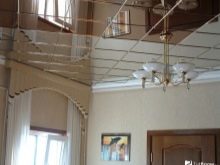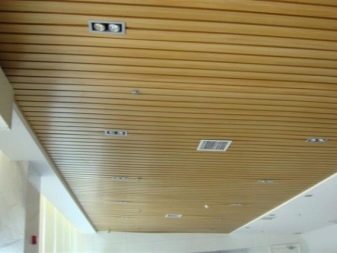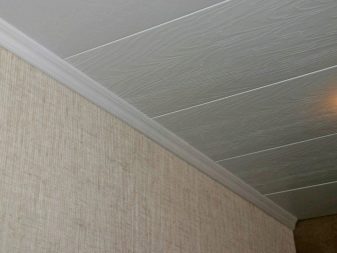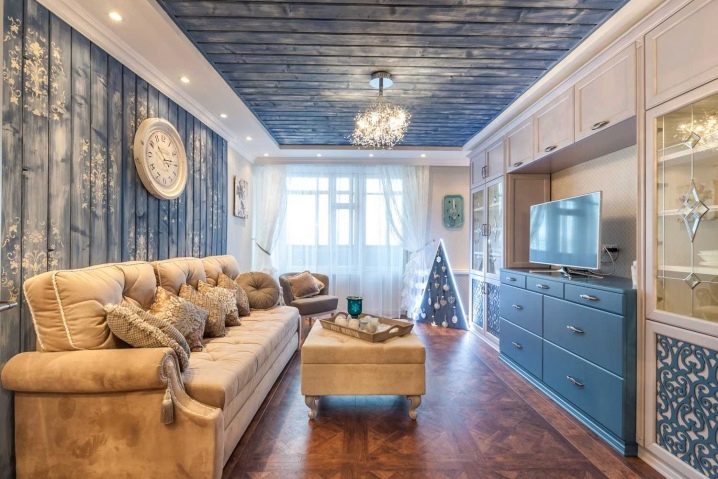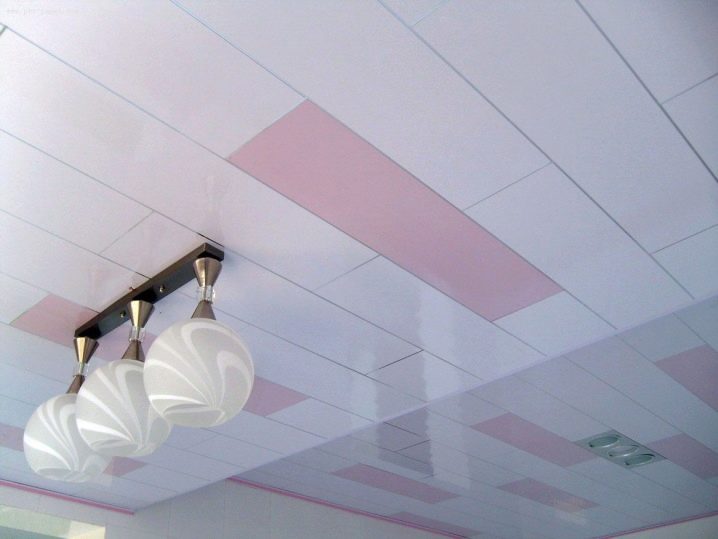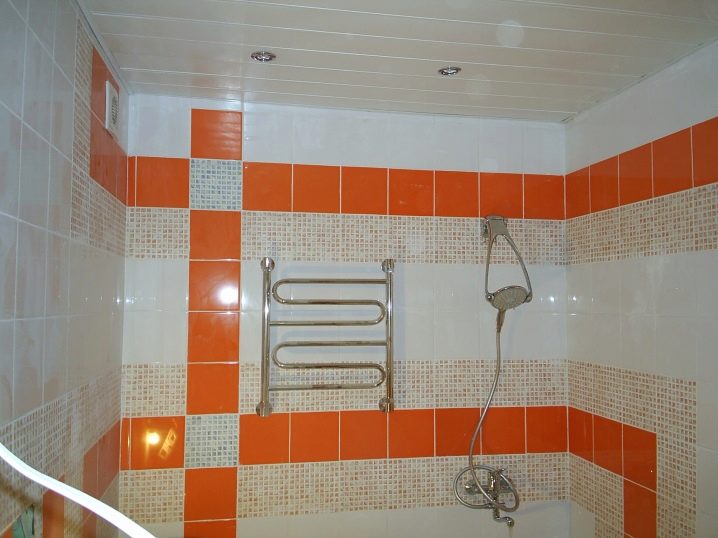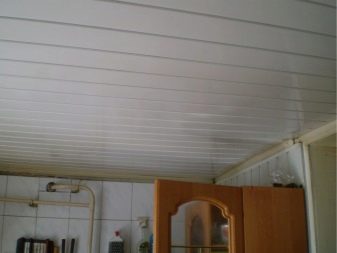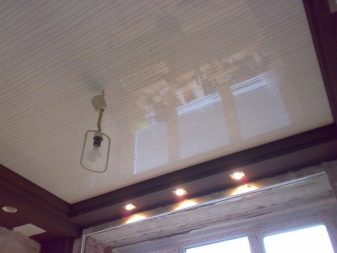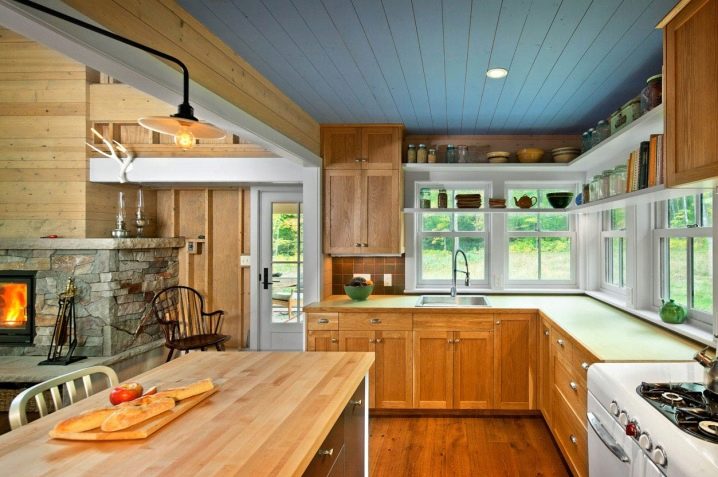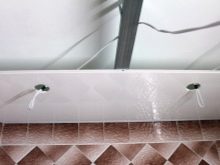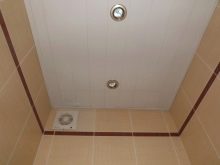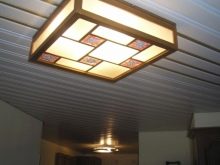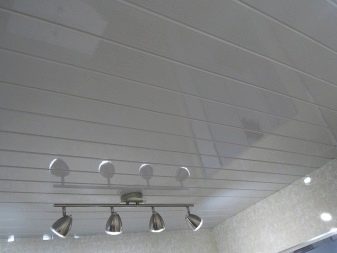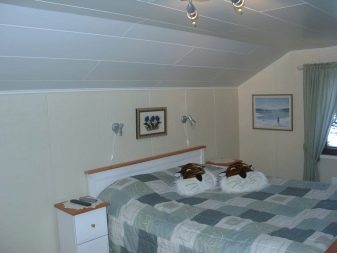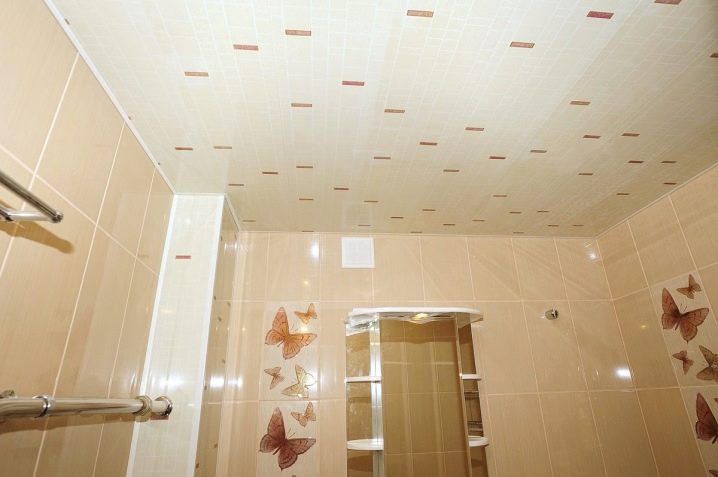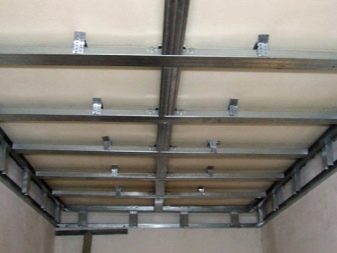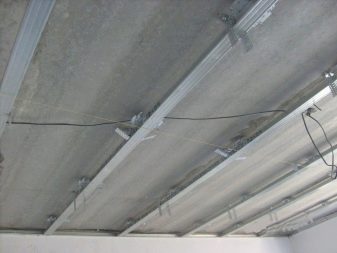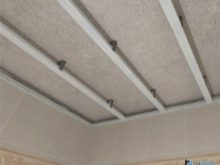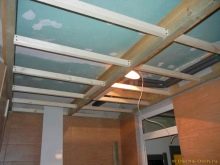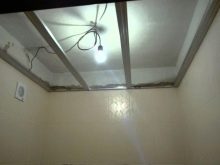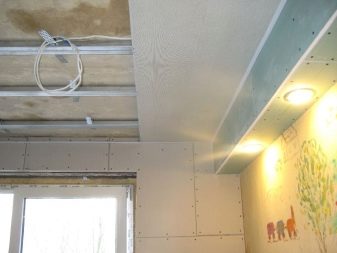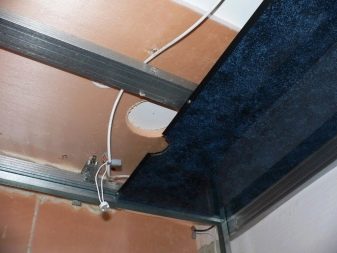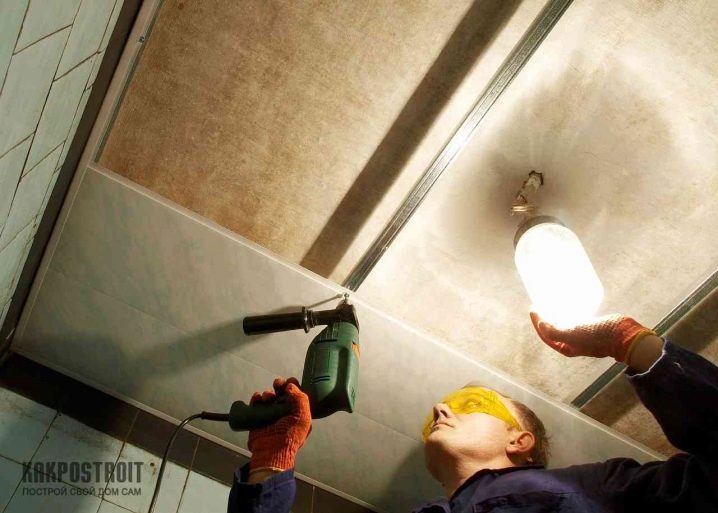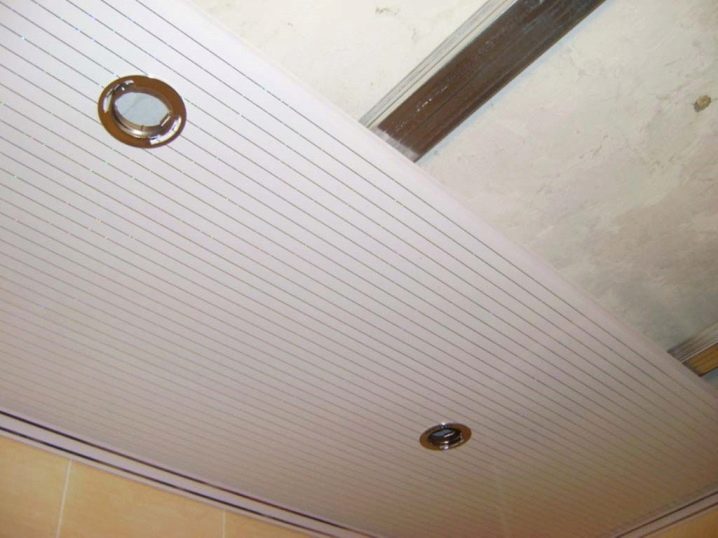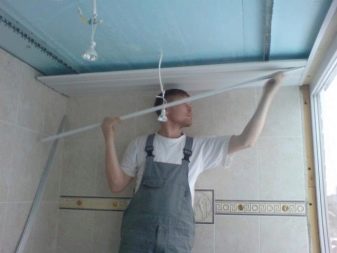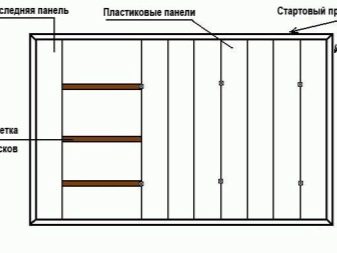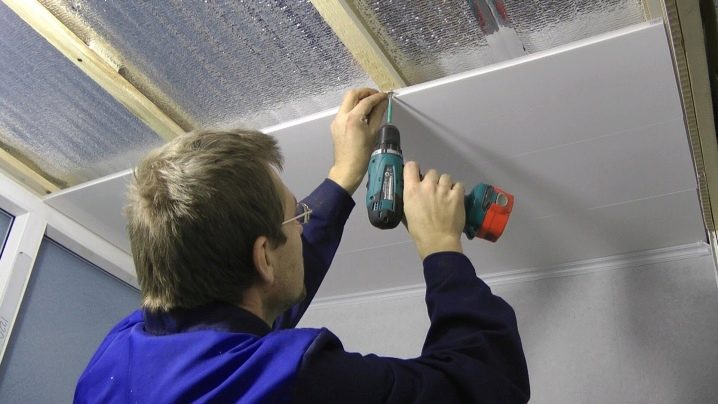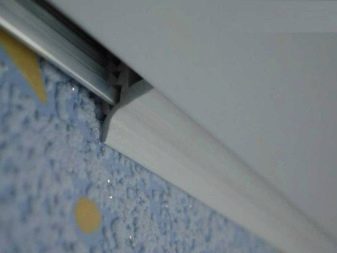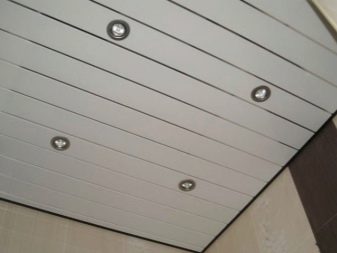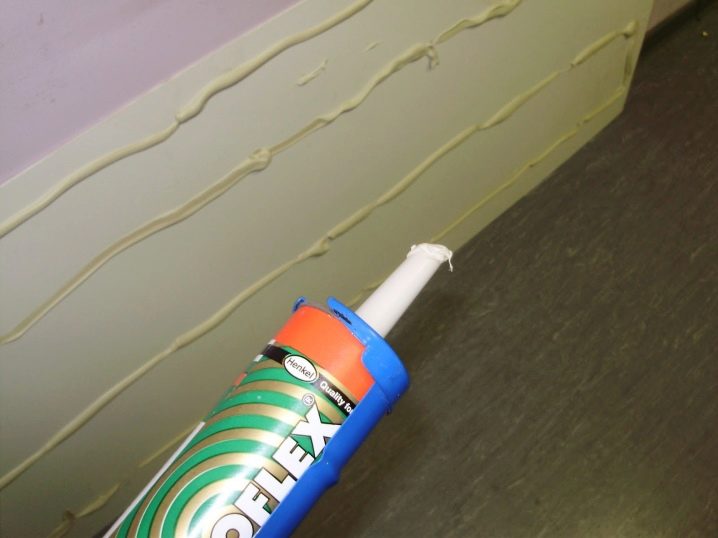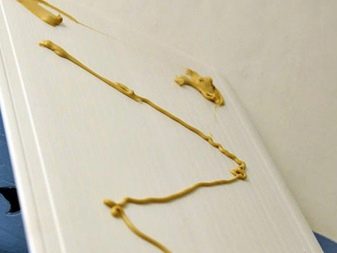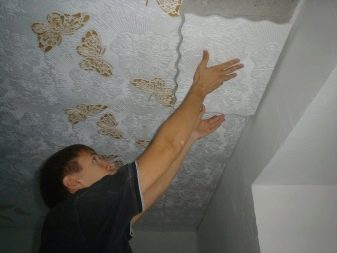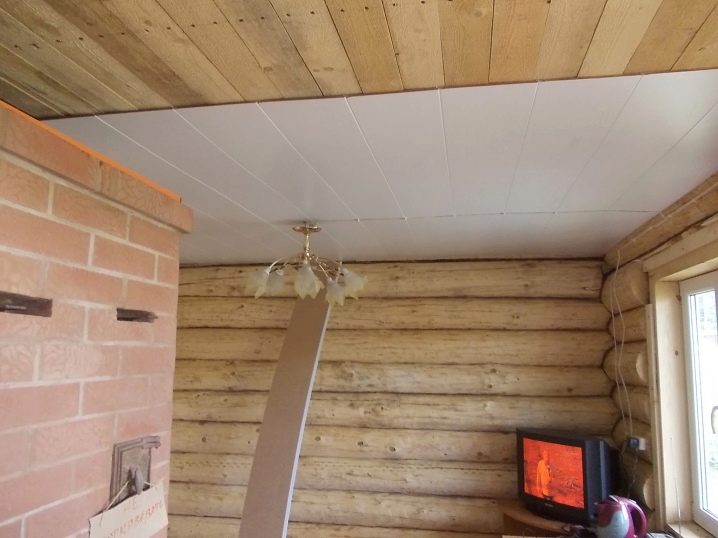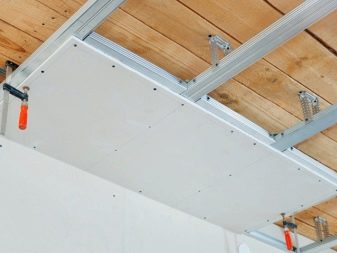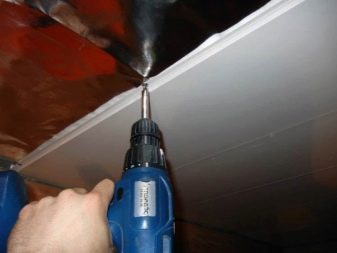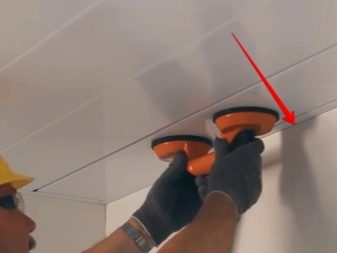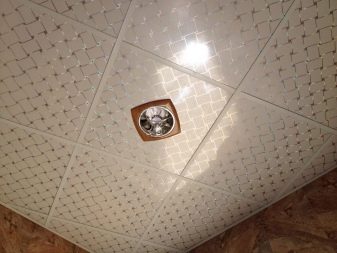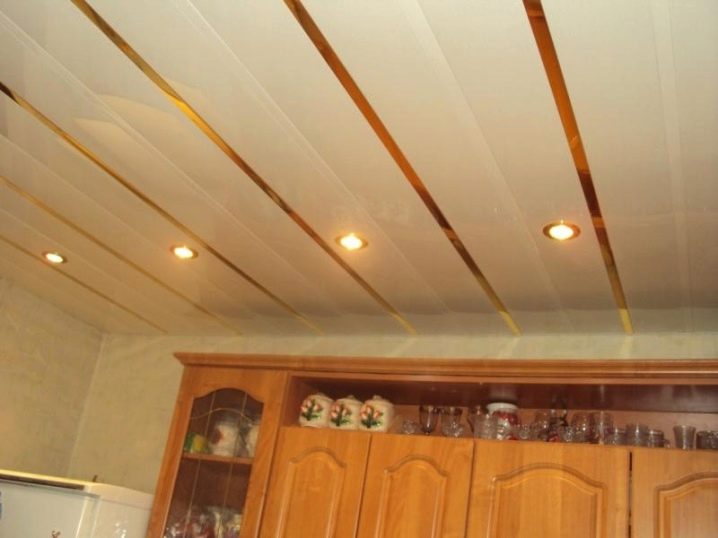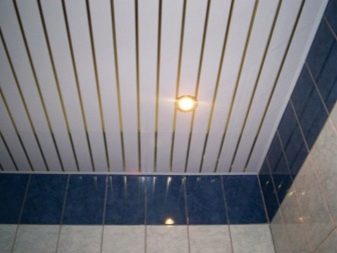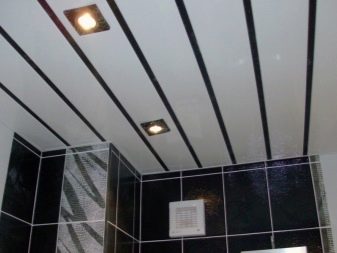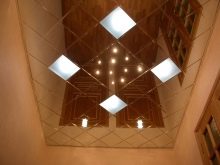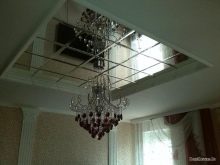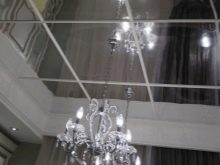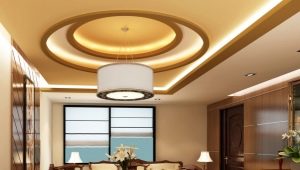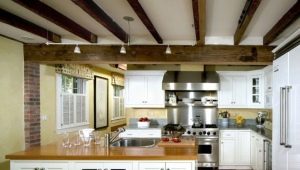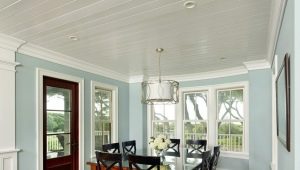The subtleties of finishing the potted plastic
Today, there are many options for finishing the ceiling. This base can be sheathed with both expensive and affordable materials. For example, it can be plastic panels, represented by a wide range. Such coatings look attractive and easy to install. Today we will talk about the intricacies of finishing the ceiling with such materials.
Special features
Today, many owners choose PVC panels for the ceiling. The popularity of these finishing materials is due to their affordable cost, fairly simple installation and durability.
In retail outlets it will be possible to find plastic facing panels made in any vein. It can be not only laconic monophonic options, but also non-trivial canvases with different images or patterns. With the help of such finishing materials you can give the interior a more interesting and expressive look.
With the installation of plastic panels to handle easily.To do this, it is not necessary to call a brigade of craftsmen whose services can cost a pretty penny. You will be able to cope with such finishing works independently.
PVC panels can be mounted in different rooms. This can be not only a living room or hallway, but also a bathroom or kitchen. High-quality coatings do not fear the increased level of humidity - they do not undergo deformation in such conditions and do not lose their original appearance.
Advantages and disadvantages
If you want to decorate the ceiling with plastic panels, then you should familiarize yourself with their advantages and disadvantages.
First, consider what advantages these facing materials can boast:
- Polyvinyl chloride panels are durable materials. Their service life can reach 20 years or more.
- Such materials do not rot.
- They do not require complex and constant care. You only need to occasionally wash away the accumulated dust.
- Plastic panels are great for ceiling decoration, as they have soundproofing characteristics.
By placing them on the ceiling, you protect yourself from the extra noise coming from above.
- Plastic panels are lightweight, so working with them is easy.
- Ceiling panels made of plastic are not afraid of temperature changes. In such conditions, they are not deformed. Of course, this property applies exclusively to high-quality materials.
- Plastic panels are often used for the visual separation of living space into functional areas.
- Plastic panels can be attributed to universal materials. They can be mounted both in city apartments, and in private houses.
- It should be noted a rich assortment of these facing materials. Due to the large selection of suitable cover will be able to pick up for the ensemble, made in any way.
- Plastic panels can hide the flaws and differences in ceilings.
- Under these coatings will be able to reliably "hide" electrical wiring and other similar elements.
- PVC coatings are affordable. A suitable option can be chosen for any wallet.
Plastic panels are not ideal materials. Despite its popularity, such products have their own weaknesses:
- Today, stores sell a lot of materials made from low-quality plastic, which contains toxic substances. These coatings are unhealthy. They are not advised to install in residential areas.
- After installing plastic ceiling coatings, an unpleasant chemical odor can hold in the room. But It is worth noting that not all buyers noticed this defect.
- Plastic is not a "breathable" canvas. Due to its presence, the air cannot circulate freely, penetrating the ceiling.
- In most plastic canvases there are voids in which insects are often infused, and getting rid of them is a big problem.
- Ceiling panels made of plastic are not impact resistant materials. They are subject to mechanical damage, so when working with them you can not push or press hard on the surface.
- The lion's share of PVC panels "does not like" the sun's rays. Under their influence, these veneering materials may lose their color saturation.
- Plastic is a combustible raw material. When ignited, it emits acrid smoke.
Kinds
There are several types of plastic panels needed to finish the ceiling. Let's get to know them better.
Seamless
Such types of plastic ceiling cloths are considered more aesthetic and attractive. After installation, they form a neat and solid canvas on the ceiling, in which all the parts are joined as closely as possible. Joints and slots are not visible on these surfaces.
Rack
Such plastic trim options are more common. They are cheaper than seamless copies. It is worth considering the positive qualities of plastic slats:
- Such a lining is not afraid of high humidity, so it is allowed to install it in the bathroom, in the kitchen and even in the bath.
- The slatted lamellae will not interfere with the quality ventilation of the ceiling, since they contain various sized vents between the slats.
- Such elements can be installed both along and across the existing space.
- Rack canvases are inexpensive.
- Installation of such coatings is quick and easy.
- Rack sills can boast of durability.
Sectional
Also quite often there are sectional plastic panels for ceiling decoration. These differ in their device.These panels can be two-and three-section.
On the surface of the sectional lamellae, each individual section is distinguished by a thin strip. As a rule, this element has a golden or silver color. Often, such ceiling coverings are confused with aluminum slats that are installed tightly to each other. This is due to the external similarity of these materials.
With 3D effect
If you want to buy more interesting ceiling finishes, then you should take a closer look at the PVC panels with a 3D effect. These coatings have a raised surface. It may contain both small and large parts with convex shapes.
Such coatings look impressive not only on simple single-level ceilings, but also on beautiful multi-level structures with a plasterboard box.
SLR
If you want to create a beautiful and rich interior design, without resorting to expensive finishing materials, then you should get spectacular mirror panels. Having decorated the ceiling with similar coatings, you can visually expand the living space and make it lighter.
Mirror panels are produced not only standard rectangular, but also square and diamond-shaped. On the surface, such materials have a special film with a reflective effect.
Plastic panels with a mirror surface can be found not only in home interiors, but also in cafes, shopping centers and other public institutions. They are inexpensive and look presentable, which makes them incredibly popular.
Imitating natural materials
Separately, it is worth to highlight panels made of plastic, imitating various materials of natural origin. For example, it can be an imitation of a wooden or stone coating. These options look attractive and natural.
Of course, choosing such panels should be especially careful - low-quality coatings with poorly applied images will look inharmoniously and cheaply.
Design
Plastic panels can be mounted in many rooms. Properly selected coatings will look harmonious in the hallway, in the living room, and in the bathroom.
It is worth noting that for the areas where you receive guests, it is not recommended to purchase simple lath canvases of a classic white plastic color. These finishing materials will significantly reduce the price of the interior.In such conditions, more attractive and fashionable coatings, for example, mirror or wood look, will harmoniously look.
Currently, plastic ceiling panels are available in a variety of colors. Consider that for small rooms it is not recommended to purchase too dark materials - they can make the space even smaller. In such situations, bright canvases will look much better - they visually expand the space, making it lighter and more comfortable.
If you want to buy ceiling panels with patterns or colorful images, then you should be more careful. Too motley and intrusive canvases can overload the space, making it uncomfortable. Being in a room with such a "crushing" ceiling will be uncomfortable.
If the ceiling in the room is bright and colorful, then the other floors should have a more neutral color. This rule must be observed so that the whole interior does not seem coarse and ridiculous.
In bathrooms most often stack panels of neutral colors. It can be white, beige, soft green or soft blue.
In the kitchen, PVC linens also look beautiful and harmonious. In this case, the appropriate lamella should be selected, based on the shade of the headset, as well as the finishing of the walls and floor. The texture of the panels can be both matte and glossy.
It is not recommended to install ceiling panels in both children's and adult bedrooms. In such conditions, good ventilation should take place, which cannot be achieved with “not breathing” plastic canvases.
It is also not recommended to install plastic panels in interiors that are made in rich and artsy styles. These include such directions as Rococo, Empire, Art Deco, Neoclassicism and Baroque. In such ensembles it is customary to use only expensive materials of natural origin. Ordinary plastic will noticeably stand out from such interiors, demonstrating its cheapness.
Light fixtures
For ceilings trimmed with plastic panels, sold a variety of suitable fixtures. Most often, such coatings are complemented by built-in and overhead lighting devices, which can be found in any store specializing in the sale of such goods.
The most popular and popular are recessed fixtures. As a rule, they are small and easy to install.
Also in the plastic ceiling lights may be different bulbs. For example:
- halogen;
- LED (the most economical and durable);
- energy saving.
The latest versions of light bulbs are chosen less frequently than others, since they are increasingly being replaced by modern LED specimens. Of course, the ceiling, decorated with plastic panels, can be supplemented with a classic pendant chandelier. However, in this case it is necessary to strengthen the frame structure on which the plastic will adhere.
Installation
To install plastic ceiling panels do not need to have a wealth of experience and special knowledge. All work is quite possible to do it yourself. The main thing is to follow simple step-by-step instructions, and the result will not disappoint you.
Training
Before proceeding directly to the installation work, you must carefully prepare the ceiling. From this basis, nothing should fall off or crumble. If such defects do occur, you should get rid of them.. After this, the surface of the ceiling is recommended to treat the primer mixture.
After that, go to the markup of the future frame around the perimeter of the ceiling. On the walls in the room you need to draw a line with a marker or pencil. It will serve as a guide when filing hanging parts. This distance should be calculated for concealed wiring of lighting devices. Then, the lowest point is selected on the base, after which a line is drawn over the slabs using a long level.
After that, using a level, all lines are transferred to other walls. Experts recommend using an accurate laser level for this. Then you need to start marking the supporting structures of the future frame base.
It is important to note here that the installation of these elements should occur perpendicular to the PVC lamella itself.
Frame
Often the framework is necessary for the installation of PVC panels design. There are several options for crates:
- From plastic. For the preparation of the U-shaped profile or plinth it is possible to use high quality plastic.When you mark the lower border on the walls, the plastic frame needs to be fixed along this line.
- From wooden bars. Often for the manufacture of a reliable and durable frame used wooden beams. Using dowels and screws, the bar is attached directly to the ceiling (every 60 cm). To ensure that all elements are aligned on the same level, it is worth attaching a lining of wood between the bar itself and the base.
- Of metal. Metal crate is the most common, durable and reliable. For its preparation, U-shaped profiles are used, which are attached by anchors to the ceiling base in increments of 60-80 cm.
When you have decided on which frame you are going to install for plastic plating of the ceiling, you should go directly to its installation. Stages of work:
- First you need to mark on the walls of the place of attachment profiles. In order to line the suspended structure was horizontal, you must use a level.
- Further along the perimeter of the ceiling, it is necessary to install a profile so that there are no gaps between it and the wall.
- After that, you can proceed to the fastening of transverse profiles.
- Next, take the L-rail. It needs to be fixed around the perimeter of the room.
- If you plan to supplement the cladding with lighting devices, then you need to take care of the wiring.
Installation
After you prepare the crate, you can proceed to the laying of plastic panels. Let us consider in more detail how to assemble PVC-cloths on the finished frame step by step.
The first plastic panel should be inserted in the corner to the transverse U-shaped rails. All subsequent parts should be inserted into the groove of the previous ones. Fix these elements need with screws.
Experienced craftsmen advise you to trim the start panel with a hacksaw or a special knife. Using these devices, it is necessary to cut the part's latch along the edge. Do not be afraid of anything - plastic slats are cut quite easily. In order for all the panels to closely fit each other, during installation, they must be carefully knocked down with a hammer. Do not use too much force, otherwise the plastic may crack or break.
When all plastic panels are laid out, you should pay attention to how the last part is installed correctly.At this stage, you should be especially careful and careful, as you yourself will have to adjust the panel width. Do this carefully so as not to damage the plastic. Next, the lamella will need to be inserted into the bar located on the opposite wall.
Some overturn the panels with a lock directed to the opposite side, and then cut it around the groove.
The last element must be fixed on the base with screws. All fasteners should be as reliable as possible. Then all the details will be firmly on the frame and will not begin to depart from it over time.
Then you need to glue the ceiling plinth. With it, it will be possible to close the edges and gaps of the trim on the ceiling. To glue such elements is using ordinary liquid nails. Adhesive should be applied to the baseboard itself, then attach it to the ceiling, press it and hold it a little.
As a rule, when pressing the edges of the plinth, there is an excess of glue - they must be removed with a rag and done as soon as possible.
There are also such types of ceiling plinths that you need to assemble yourself.Such parts are assembled by snapping the opposite side. Emerging gaps need to cover with sealant.
On glue
It is possible to mount plastic ceiling panels with glue (without installing a frame). A similar way to trim the ceiling is the easiest and most affordable. In addition, during such work, the height of the ceiling is not "taken away".
However, the installation of PVC panels is not glue has its own weaknesses:
- Immediately before installing the panels, you will need to prepare a good base. From its surface, you will need to remove any previous coatings and finishing materials.
- This method is not suitable for ceilings with significant irregularities and drops. On this basis, the panel will not be able to dock qualitatively. Over time, they can simply fall off of it.
- If you put plastic panels on glue, then you will not be able to hide communication systems under them.
Let us analyze in steps how to sheathe the ceiling with plastic panels with glue:
- cut the launch pad in length;
- after that, several thin strips of liquid nails should be applied to the back of the part;
- after that, the panel should be pressed to the ceiling base and immediately torn off;
- after 3-5 minutes, it must be pressed again to the installation site, but this time finally;
- as for the finishing panel, it can be hemmed to the rest of the details only after trimming, this should be done not only in length, but also in width;
- At the end of all finishing work should be put the usual ceiling plinths or beautiful baguettes. These elements are permissible to install using liquid nails or acrylic putty.
Tips
If you decide to do it yourself, sheathe the ceiling with plastic panels, then you should listen to the advice and recommendations of professionals:
- First, decide which panels you want to lay on the ceiling. These finishing materials should match the main interior in style and color.
- Do not look for panels that are too low priced. Most likely, these are low-quality materials, which include toxic elements harmful to health.
- It is advisable to make an estimate in advance of the installation of such finishing materials.
- If you produce a filing of PVC panels, then all the wires must be hidden inside the corrugations.A similar rule should be followed when laying MDF boards. These are fire safety requirements.
- According to experts, it is quite difficult to assemble and install a frame (especially metal) alone, so it is recommended to carry out such work together with an assistant.
- In case of frameless installation method, in no case do not neglect the preparation of the ceiling base, especially if it has various defects (cracks, hollows). Only after removing old coatings and repairing damages, sheathe the ceiling with PVC panels.
- After installation of the batten, it is necessary to check its horizontal position and the absence of differences / irregularities.
- If you use a plastic frame, then it is not necessary to use screws, but special brackets, which are installed using a construction stapler.
- If you are going to supplement the plastic ceiling with a large chandelier or a second ceiling level, then you need to strengthen the crate. To do this, install more guide profiles, leaving a minimum gap between them. This applies to both metal and wooden frames.
- It is not recommended to cover the ceiling with plastic panels in a room with a low temperature.
- For repair, you must purchase high-quality finishing material. To check this parameter, you should compress the end cut of one of the panels in your hand. This part should not be crumpled or cracked. High-quality material under compression can only slightly decrease in thickness, and then quickly recover.
- If you are going to supplement plastic panels with lighting devices, then you should purchase materials with a deep seam.
- After installation it is not recommended to clean plastic panels with caustic substances and aggressive chemicals. It is better to use a regular sponge or a damp cloth made from a soft cloth.
Beautiful examples in the interior
Plastic panels can be sewn ceilings in almost any room. Properly selected coatings will look spectacular in the kitchen, in the hallway, in the bathroom, and in the toilet.
For example, in a kitchen with light-colored walls and a wooden set of brown hue, white or beige panels with golden dividing stripes will look harmoniously sectional.
Such a ceiling should be supplemented with recessed fixtures with gold-plated edging.
In the bathroom, you can sew plastic panels of any type, from slatted to seamless. The main thing is that they come in color to the tile. Versatile are white coatings. They may contain dividing strips of silver or golden color. Against the background of such a ceiling, both light and dark wall finishing materials will look equally harmonious.
Bright plastic panels - the perfect solution for a narrow corridor or a small hallway. Such spaces can visually expand glossy or mirror materials. If you back them up with suitable lighting fixtures, the situation will become very bright and hospitable.
And mirrored panels of diamond or square shape can be installed in more expensive and pompous interiors. They look especially impressive and attractive if they are complemented by a lush chandelier with pendants and chrome parts.
Such a bright and expressive decoration of the ceiling can be accessed not only in the hallway or hallway, but also in the living room.
The process of installing PVC ceiling panels in the bathroom can be viewed in the video below.
